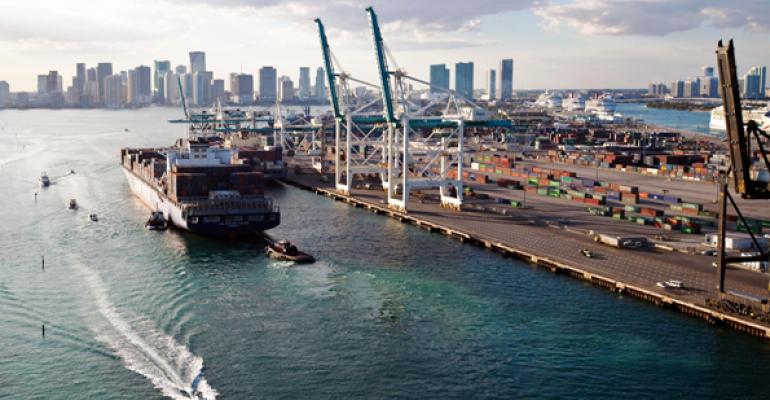Demand for industrial space is high around the nation’s transportation hubs, including both deep water ports and airports, as the U.S. economy improves and the dollar gains strength. Which ports will see the most growth in the long term is anyone’s guess, but the clear winners in the next few years will be property owners with assets closest to each product entry point.
Two recent reports on the nation’s shipping industry, including an Airport Outlook Report by Jones Lang LaSalle and CBRE’s inaugural Ports and Logistics Annual Report, show that today industrial properties near ports are at peak demand. E-commerce companies have set a goal of same-day service for every online order, and corporations are finally spending on growth again, pushing shipping orders to new heights and placing a strain on the nation’s logistics industry. Foreign trade is expected to double to 60 percent of GDP by 2030, and both seaports and airports are seeing 5 percent growth rates in cargo each year.
With increasing demand, available space is becoming scarce around both water ports and airports, and industrial rental costs for tenants are skyrocketing. Rent premiums at Los Angeles, Miami and Chicago O’Hare airports are at 63.5 percent, 33.8 percent and 24.3 percent, respectively, according to JLL. The seaports of Los Angeles and Long Beach, Calif., which handle almost half of the $2 trillion in total U.S. imports, have an availability rate of only 7 percent for industrial properties and saw rents increase 10 percent since first quarter of 2014, note CBRE researchers.
“If you’re looking to be right next to an airport, for example, in most major markets you know you’re going to have to pay a premium price today,” says Craig Meyer, president of JLL’s logistics and industrial services group for the Americas. “You have to be a good student of the market and be aware of the best opportunities for space.”
Rich Thompson, who leads JLL’s supply chain & logistics Solutions team, says two airport markets seeing strong growth potential are those near Dallas and Indianapolis. Both markets have intermodal facilities that help alleviate potential supply chain interruptions, and have land available for new construction. “I also like the area around Rickenbacker International Airport,” says Thompson, referencing a freight-only airport near Columbus, Ohio. “It’s well-situated in terms of the population of Midwest and East Coast, there’s developable land, and abundant rail and highway infrastructure.”
By land or by sea?
Different port types have their advantages and disadvantages. Air freight wins for today’s “need-it-now” philosophy, but it is typically 12 to 16 times more expensive than ocean freight. Airports handle less than 5 percent of international trade, but carry more of the high-value products, accounting for 35 percent of the value of commodities being shipped, according to JLL.
Seaports will likely get bigger and bigger in the years ahead, especially considering that larger post-Panamax ships will start hitting all coasts in 2016. The pressure is already on to fix the current congestion issues and a national truck driver shortage. Those problems were exacerbated early this year when the International Longshore and Warehouse Union held a strike that tied up shipping traffic to this day.
Thompson says the strike forced many companies to diversify their shipping to add air travel, at least as a back-up. “While using airports is expensive, it’s also the most reliable,” he says. “Air freight is an important risk management play today for companies that have been solely reliant on ocean freight.”
However, seaport property owners needn’t worry about competition yet, says David Egan, CBRE’s head of industrial research for the Americas. Ocean shipping is just too cheap a method to abandon.
“We see air to support replenishment and chase demand that is not as easy to plan for (staple goods vs. seasonal),” he says. “As systems and technology continue to drive innovation, companies are getting smarter about the flow path and quantity of inventory needed, both at the right time and location. The smarter they get, the more time they buy on in-bound and [the] more they can use the lowest cost shipping methods.”

